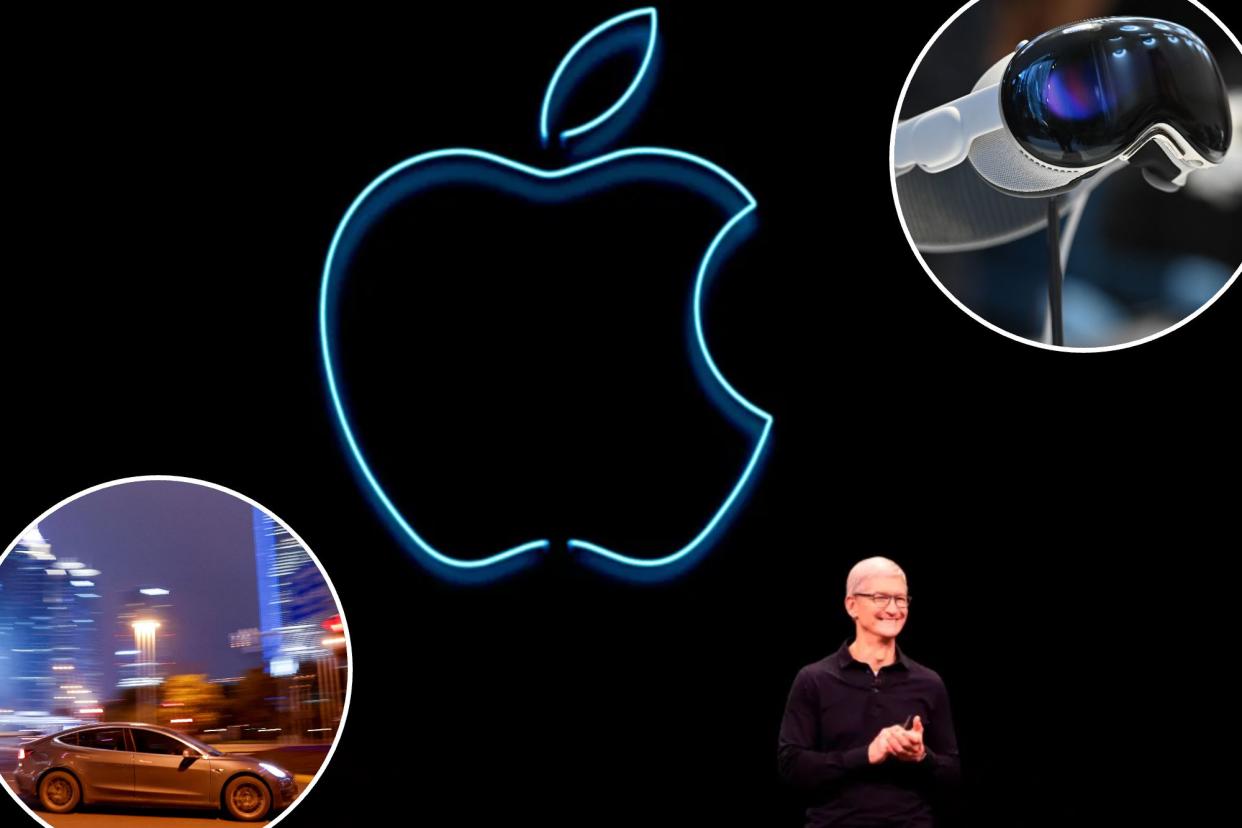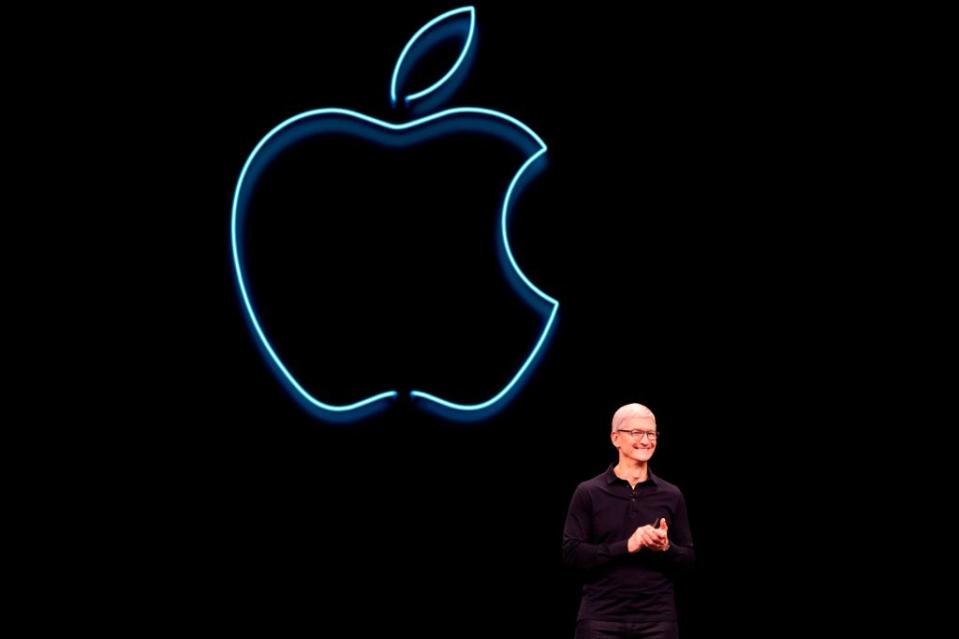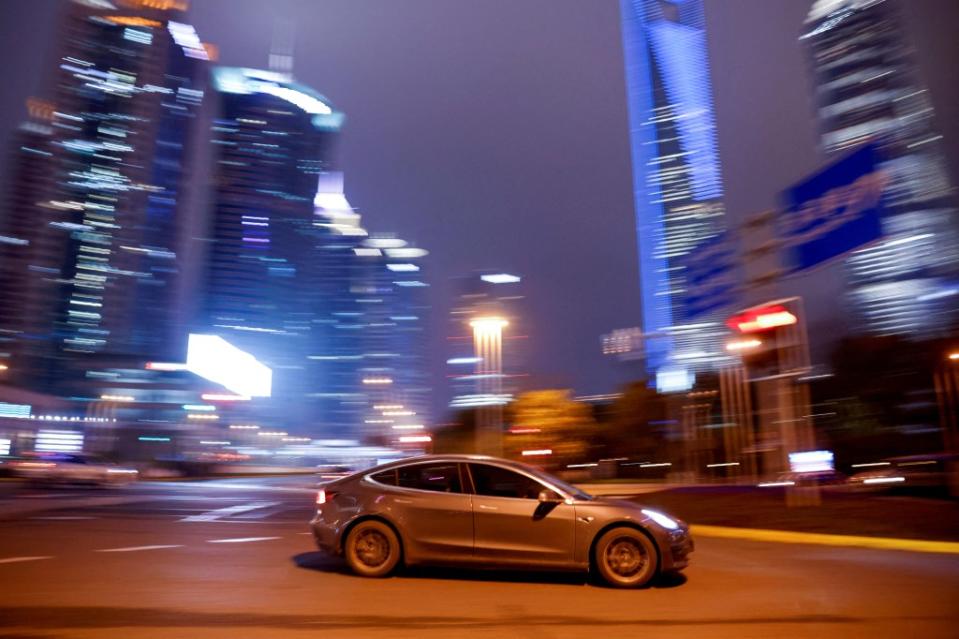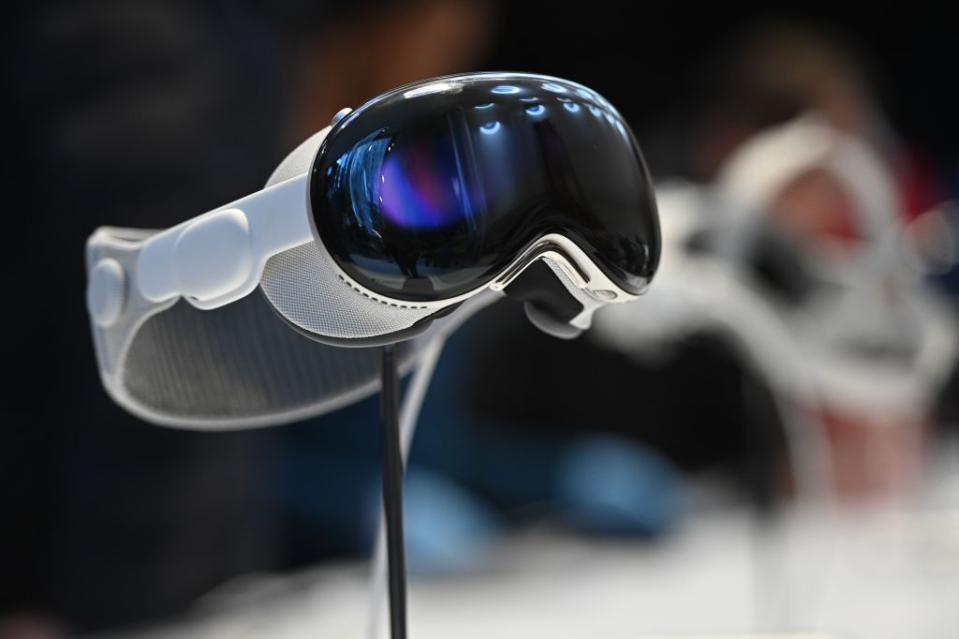Apple ditches decade-long ‘Project Titan’ electric car venture as it shifts focus to generative AI

Apple is abandoning its decade-long effort to build an electric car in favor of ramping up efforts on its generative AI projects, according to a report.
Apple announced the plans internally on Tuesday, sources told Bloomberg, rattling its nearly 2,000 staffers working on the self-driving vehicle, which was initially intended to launch sometime in 2026.
The decision was shared by Chief Operating Officer Jeff Williams and Kevin Lynch, a vice president overseeing the effort, the people told Bloomberg, asking not to be identified when discussing private matters.
The two Apple executives told staffers that as the Cupertino, Calif.-based company winds down the team working on the car — known internally as the Special Projects Group, or SPG — some will be shifted to the artificial intelligence division.

These staffers will now focus on generative AI projects under executive John Giannandrea, according to Bloomberg, as Apple looks to get up to speed to rivals Microsoft, which has a $10 billion multiyear agreement with ChatGPT-maker OpenAI and Google — though the tech giant is currently in hot water over its “woke” Gemini text-to-image software.
Hundreds of others in the SPG — many of which are hardware engineers and car designers — can either apply for another job within Apple or will be laid off.
It’s unclear how many will be axed.
Representatives for Apple did not immediately respond to The Post’s request for comment.
The decision to ditch Project Titan kicked off in 2014 with the goal of creating fully self-driving vehicles with luxurious interiors and voice-guided navigation, according to Bloomberg.

However, Project Titan has struggled nearly from its inception. When Apple executed test drives around tis Silicon Valley headquarters in 2022, it had trouble navigating streets — when it frequently bumped into curbs, veered out of lanes and into the middle of intersections and even nearly hit a jogger.
A revolving door of departing executives had also plagued the program.
Williams and Lynch took over the undertaking a few years ago following the departure of Doug Field, now a senior executive at Ford, according to Bloomberg.
Ian Goodfellow, a renowned scientist who headed the machine-learning division within Project Titan, also left the company back in 2022.
Apple’s self-driving car was originally intended to differ from those being developed by rivals such as Google-backed Waymo and General Motors’ Cruise since it would have no steering wheel and pedals, with interiors designed around hands-off driving.

Troubles along the way had it scale back its ambitious plans — by adding a steering wheel and pedals — and delay its launch from 2025 to 2026, though it was still anticipted to tout a $100,000 price tag.
Meanwhile, Apple released its long-awaited Vision Pro earlier this month for a sticker-shocking $3,500, though customers were reportedly returning the virtual reality headset just weeks after purchasing it.
More than 200,000 pairs of the groundbreaking goggles were sold during pre-order before being released to the public on Feb. 2.
But while some frenzied fans say the Vision Pro will revolutionize the tech industry, other peeved purchasers are already returning theirs to the Apple Store, citing extreme headaches, nauseousness, motion sickness and “eye fatigue.”

